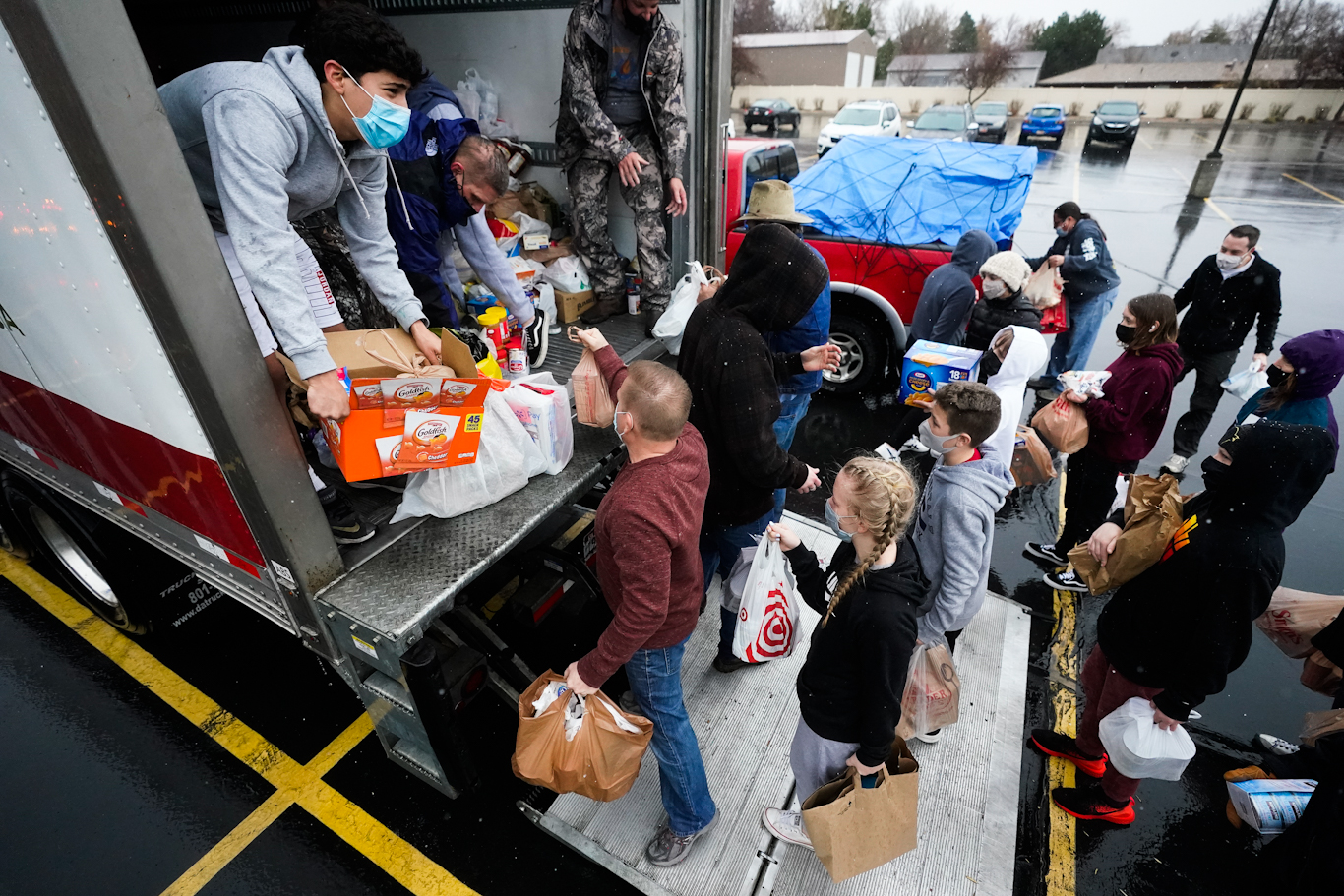“Four Meals from Anarchy”: Rising Food Prices Could Spark Famine, War, and Revolution in 2022
by Alan Macleod, MintPress News:
 The political consequences of hunger are profound and unpredictable but could be the spark that lights a powder keg of anger and resentment that would make the 2020 Black Lives Matter protests look tame by comparison.
The political consequences of hunger are profound and unpredictable but could be the spark that lights a powder keg of anger and resentment that would make the 2020 Black Lives Matter protests look tame by comparison.
WASHINGTON – Already dealing with the economic fallout from a protracted pandemic, the rapidly rising prices of food and other key commodities have many fearing that unprecedented political and social instability could be just around the corner next year.
With the clock ticking on student loan and rent debts, the price of a standard cart of food has jumped 6.4% in the past 12 months, according to the Bureau of Labor Statistics, with the cost of eating out in a restaurant similarly spiking, by 5.8% since November 2020.
TRUTH LIVES on at https://sgtreport.tv/
The most notable change has been in the price of meat, with beef costing 26.2% more than it did last year, pork 19.2% more and chicken 14.8% more. Bacon prices have reached historic levels, and are now 36% higher than in 1980, even after adjusting for inflation. And with new animal welfare laws coming into effect soon regarding the minimum space required for pigs, some have predicted widespread shortages of bacon and a further price increase of up to 60%.
Eggs, sugar, and fresh fruit and vegetables have also hit consumers’ wallets, putting the average cost of hosting a Thanksgiving dinner at $53.31 this year, according to the American Farm Bureau Federation’s annual survey. This is up from $46.90 in 2020 – a 14% increase and the most expensive it has ever been since the organization began tracking costs in 1985.
Facing unprecedented rises in costs, McDonalds announced that its prices were increasing by around 6%, while Dollar Tree has taken the decision to ditch its branding of over 30 years and roll out a 25% price increase on many of its products, meaning they will cost $1.25.
An unmerry Christmas
Food price rises are merely one aspect of a worrying overall trend, which has seen the consumer price index – a general measure of how much it costs to live an ordinary life in the U.S. – increase by 6.8%, the largest year-on-year spike since 1982. Gasoline costs 58% more than it did last year, while gas heating has increased by over 25% and home electricity costs by 6.8%.
Rising costs disproportionately impact working-class Americans. The poorest fifth of households spend far more of their income on food and groceries than the richest fifth, according to the U.S. Department of Agriculture (USDA). 42 million Americans rely on the SNAP program to buy food. Seeing the urgency required, the USDA increased monthly payments in October by an average of $36.
Still, the majority of Americans are already flat broke. Nearly two-thirds of the country currently lives paycheck to paycheck, and just 39% of Americans believe that they could cover a $1,000 emergency. Thus, with rising heating, transport and food costs, Christmas is likely to be particularly lean this year for hundreds of millions of people.
Before the pandemic, one in eight Americans, including one in six children, regularly went hungry. Some 30 million children rely on schools for meals, but with COVID-related closures, that source of nourishment has sporadically been lost. Facing this pressure, many Americans simply have not been able to cope. Feeding America, the nation’s largest chain of food banks, told MintPress that they have been forced to purchase 58% more food than last year to meet ever-rising demand. Katie Fitzgerald, the company’s president and COO, stated:
There are more than 38 million people, including nearly 12 million children, facing hunger in the U.S. Our food banks and partners are resilient and are doing everything they can to continue to provide food to our neighbors in need, but we cannot sustain this level of response without the continued support from the public and private sector.”
The effects have been felt across the country, but not equally. Save The Children identifies East Carroll Parish, Louisiana as the county with the highest food insecurity rate in the nation. In the far northeast of Louisiana, among the bayous and fields just west of the Mississippi River, 40% of children do not get enough food to eat; a rate comparable with Bangladesh and Peru, and higher than in sub-Saharan nations such as Mali. Those on the front lines against hunger told MintPress that rising prices have dramatically affected the amount of groceries they could purchase and distribute. Jen Toth, Executive Director of the Food Bank of Northeast Louisiana, noted:
The higher cost of food has definitely been felt by those living on very low fixed incomes or low hourly wages. Their dollars simply don’t stretch as far, and they aren’t able to buy the same amount of food compared to a year ago. Unlike rent and utilities, food is one expense that a person can control, but unfortunately that can mean in order to be able to pay other bills, a senior or a family won’t have enough money left to buy food.”
A bread-and-butter wave?
The political consequences of hunger are profound and unpredictable but could be the spark that lights a powder keg of anger and resentment that would make the 2020 Black Lives Matter protests look tame by comparison. President Joe Biden’s approval ratings are sinking, with some polls showing he is backed by only 39% of Americans. Even fewer – 31% – think the country is on the right track. Already, Republicans appear to be making the greatly increased cost of food and gasoline a major focus of their attacks against the 46th president. The hashtag “#ThanksgivingTax” trended on social media last month, as conservatives pinned the blame for the costly festivities on their political opponents.
All 435 seats in the House of Representatives, 34 Senate seats, and many governorships and state legislative majorities will be decided in the 2022 midterm elections. Preliminary polling suggests a huge red wave of anger sweeping across the United States. As CNN recently wrote, “Pretty much every single indicator that pointed to a Democratic wave in the 2018 midterms now points to a Republican one in the 2022 midterms.”
Biden has backtracked on debt cancellation promises, while the Democrats, stymied by the stubborn recalcitrance of Senator Joe Manchin (D-WV), appear to have shelved the Build Back Better agenda until at least the new year. Build Back Better includes a great deal of poverty relief that food banks and other charities have been imploring the government to pass. While the general public often pays little attention to political scandals on the hill, food and gas prices are things that tangibly affect every one of us. These bread-and-butter issues could translate into a wave of public resentment and a slump in support among the Democrats’ voter base.



